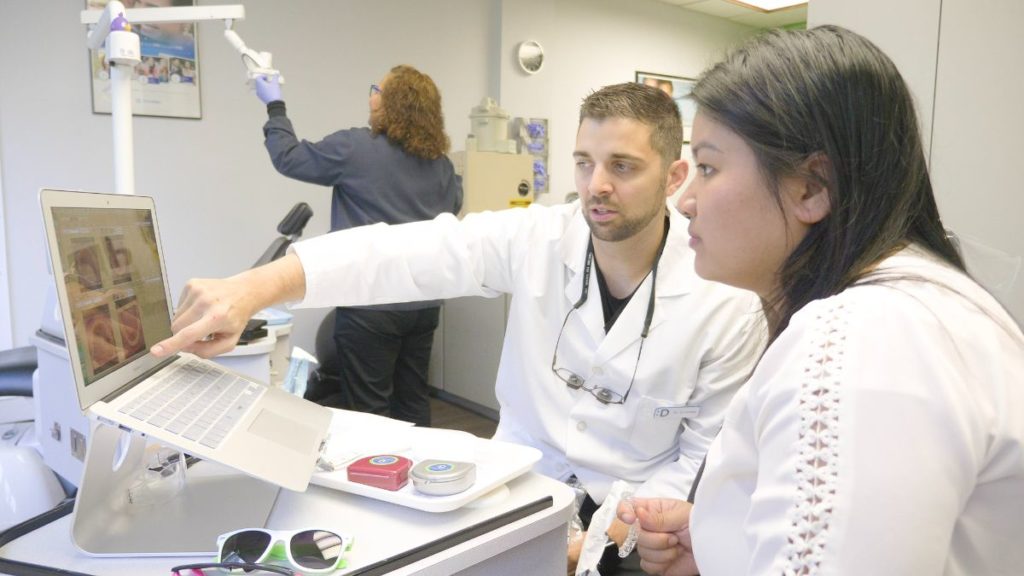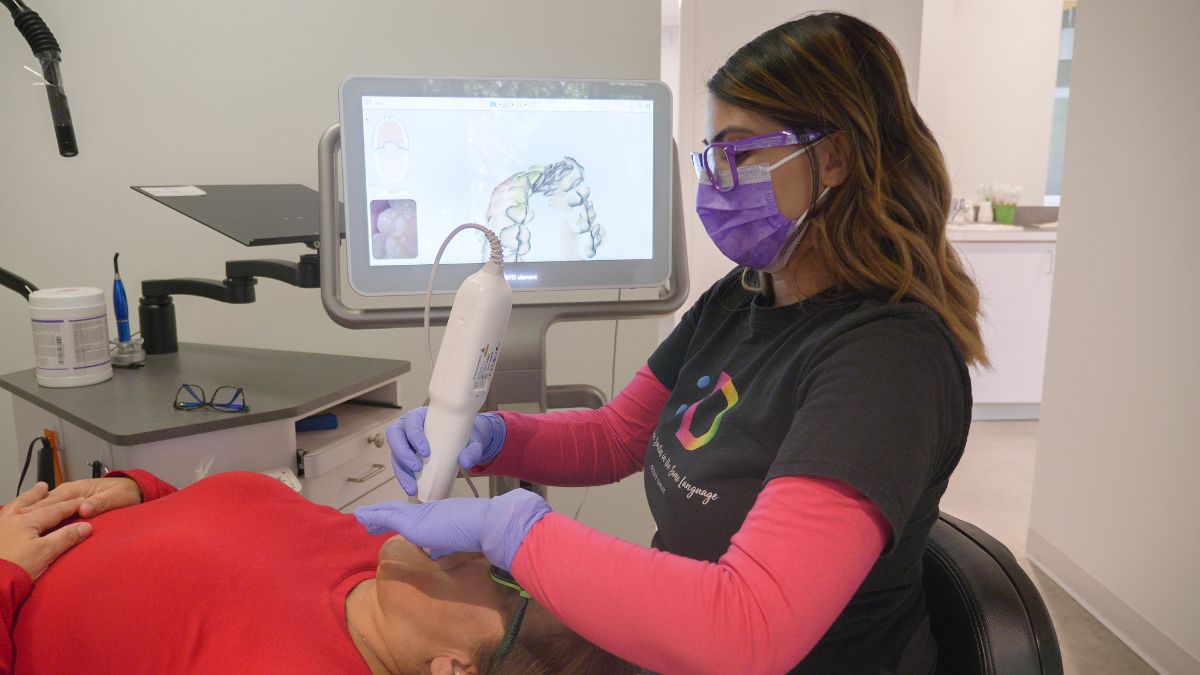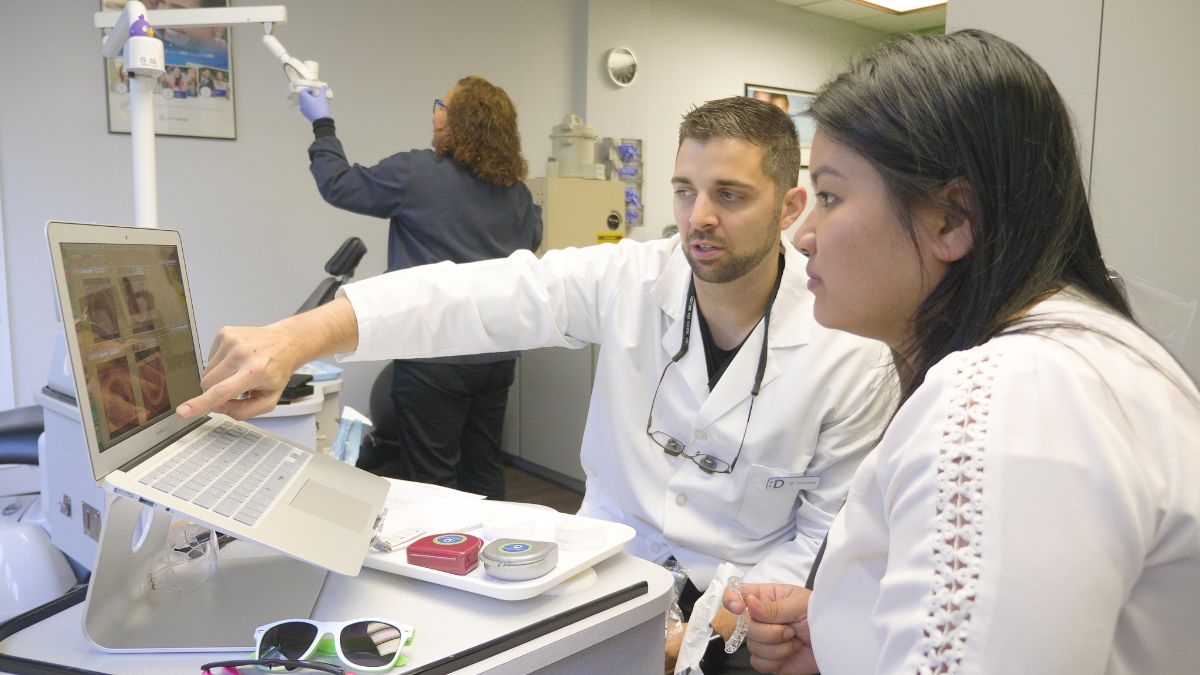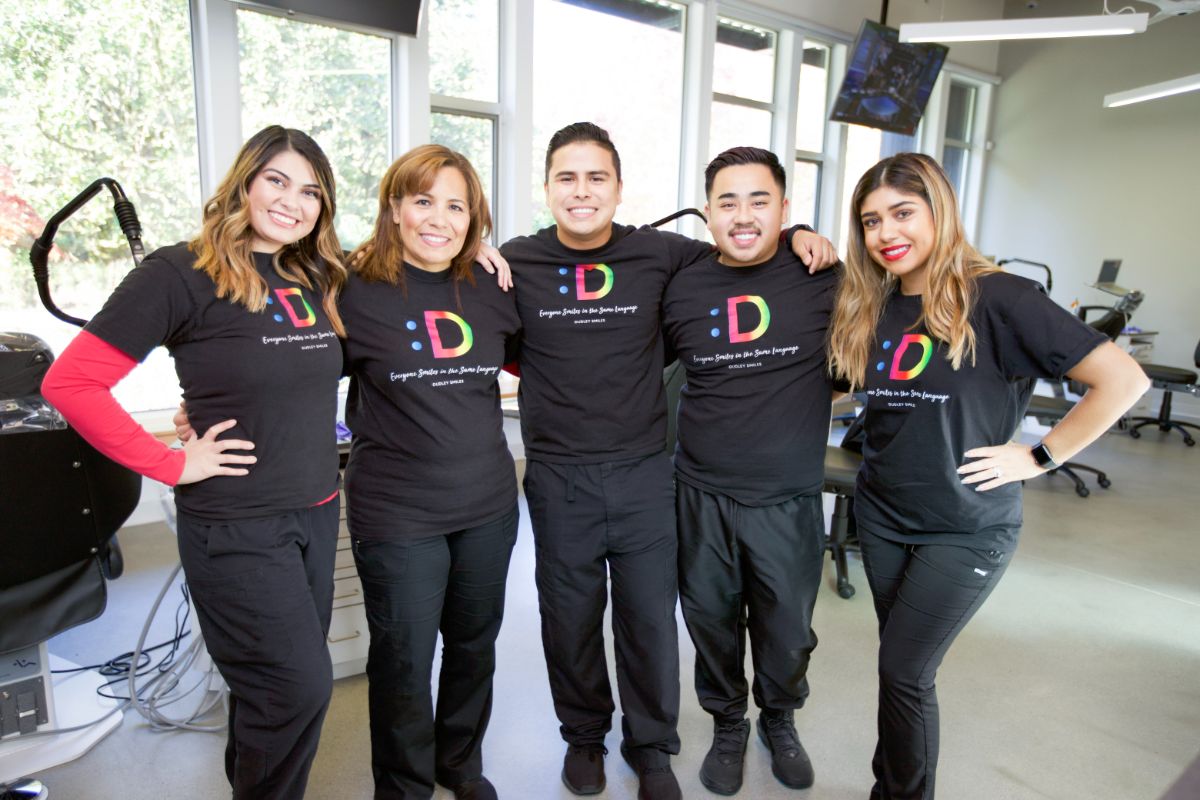Early treatment can radically simplify later treatment and, in some cases, can help you avoid later treatment altogether. It allows your dentist and orthodontist to monitor the growth of the jaw and guide incoming permanent teeth. It enables the doctor to regulate the width of the upper and lower dental arches to gain space for permanent teeth, avoid the need for extractions, and reduce the likelihood of impacted permanent teeth. Our office in Issaquah provides this early treatment, serving patients in both Issaquah and Sammamish.
With years of experience straightening smiles for the Issaquah area, our knowledgeable Dudley Smiles Orthodontist team knows your treatment may require more than just straightening your teeth. Facial asymmetry, caused by a narrow upper jaw or crossbite, is not just an aesthetic concern for some patients. It can also contribute to other oral and general health concerns like head and jaw pain. Our doctor can utilize an orthodontic appliance called a palatal expander to correct the shape of your upper jaw.
In simple terms, this device can apply constant pressure to your jaw and is slowly manipulated over time to widen the upper jaw allowing space for permanent teeth to grow in and existing teeth to be adjusted appropriately. This treatment is most often used in children during facial growth when the bone is easier to change, but patients can also use it for adult palate corrections with excellent results. Let’s dive in to understand precisely what palatal expanders are, how they work, and if this might be a good option for your orthodontic journey.
What is a palatal expander?
The upper jaw grows in two separate pieces as your mouth matures to account for this growth. It isn’t until closer to puberty that the two halves bind together to form a solid supporting structure. Our expert team can utilize this permeability to help provide your teeth space to grow and align your upper jaw with your lower jaw for optimum alignment and bite.
The palatal expander is custom-made from Dr. Dudley’s 3-D digital scan of your upper jaw and teeth. This scan is digitally sent to a lab, where the data is turned into a high-grade metal appliance that your orthodontist will install on the roof of your mouth. The device consists of two halves connected in the center by a screw that your orthodontist will instruct you to turn with a unique key on a specified schedule. This process takes time as it keeps pressure on both halves of the jaw bone, causing them to widen as intended, and is typically left on for a short time after the desired results are achieved to allow time for the bone to get used to its new position.
Who Needs a Palatal Expander?
Palatal expanders are used to slowly expand the roof of the mouth and widen the upper jaw meaning anyone can require this specific orthodontic treatment. Malocclusions like an overbite, or when your upper teeth sit inside the lower teeth, can lead to complications like jaw and head pain, tooth decay and gum disease, and even sleep apnea. While having a narrow jaw can affect tooth alignment, leading to impaction and broken teeth or even obstruction of permanent teeth that have yet to grow in. A palatal expander can make both of these dental corrections.
Before puberty, your bones are still growing and forming, making them a bit softer than adult bones. This is also true for your jawbones and means this treatment is quicker and most effective when used during adolescence before adult teeth are entirely in place. It is not to say that adults can not benefit from the orthodontic treatment of palatal expanders, but you should expect a bit more discomfort and time to reach your desired results.
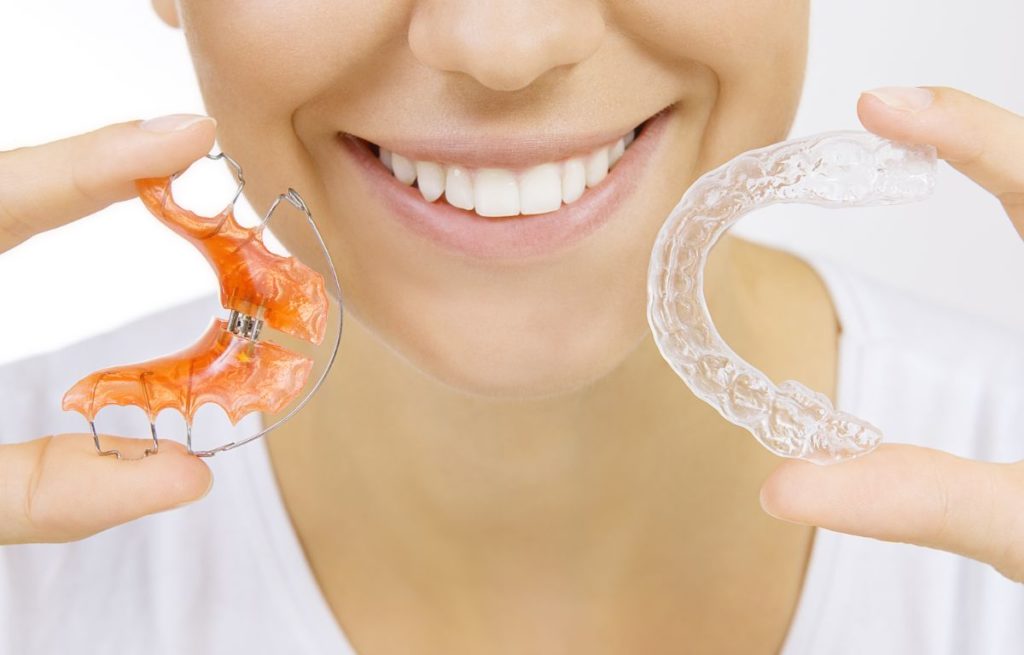
Different Types of Palatal Expanders
Depending on the adjustments needed for your unique jaw, there are several different types of palate expanders. Some expanders are fixed, and some are removable, but all palatal expanders are custom-made for the perfect fit for your palate shape and size. Let’s take a look at some of the options in orthodontic expanders.
Removable Palate Expander
If your jaw corrections are minor, you may best benefit from a removable option. There are many brands, but, in general, this appliance looks similar to a clear aligner tray with a screw in the center. It will need to be worn 24 hours a day but often do not require more prolonged treatment. Removable palatal expanders also do not always require tightening the screw daily like permanent appliances.
Fixed Palate Expander
The fixed palate expander, most commonly known as the rapid palate expander (RPE), is a system of bands attached to corresponding back molars and connects high in the center of the roof of the mouth with a screw. You will be given a unique key with instructions on how and when to use it to rotate the screw, maintaining adequate pressure for mouth expansion.
The Negatives and Alternatives
As with any procedure that will garner significant results like this, it does require work and commitment. While it may seem that this would be quite a painful experience, it isn’t more than minor discomfort, and typically, that discomfort only lasts a few minutes after adjusting the screw. And, just as with braces, palatal expanders may take a little time to get used as your tongue rests against the expander. This can make speaking, chewing, and swallowing seem a little off, but chances are, you are the only one that notices it, and you’ll get used to it in about a week.
Orthodontic treatment with a palatal expander can often cause space to form between your upper front two teeth. This spacing is entirely normal, and the gap most often closes on its own, but braces might be a good option for some patients to maintain this change. You may also experience some drooling, a lisp, or even mild headaches during your treatment, especially after tightening the central screw.
It is essential to maintain proper oral hygiene during this treatment process as it is any other time. Brush and floss regularly and avoid eating chewy, sticky, or hard and crunchy foods to ensure the appliance is not compromised.
Sometimes, a palatal expander may not be the best option for you or your smile. In those cases, our doctor can recommend traditional braces, removal of impacted or overcrowded teeth, or even jaw surgery to correct the spacing in your jaw. Dudley Smiles Orthodontist has a solution for you regardless of your orthodontic situation!

For trusted experience and care, trust Dudley Smiles Orthodontist
Dr. Silas “Si” Dudley and his team are dedicated to providing customized treatments for each of our patients in a way that makes you feel listened to and comfortable throughout the entire process. Our excellent team supports this commitment with energy and an eye for detail, making the whole experience smooth and hassle-free.
Deciding to seek orthodontic treatment is an exciting step! If you are ready to see what might be the best route to your best smile, we would love to meet with you for a FREE consultation to get to know you better. At Dudley Smiles Orthodontist in Issaquah, WA, we want your time with us to be great. No two people are the same, so no treatment plans should be the same. Keep up with us on social media!










